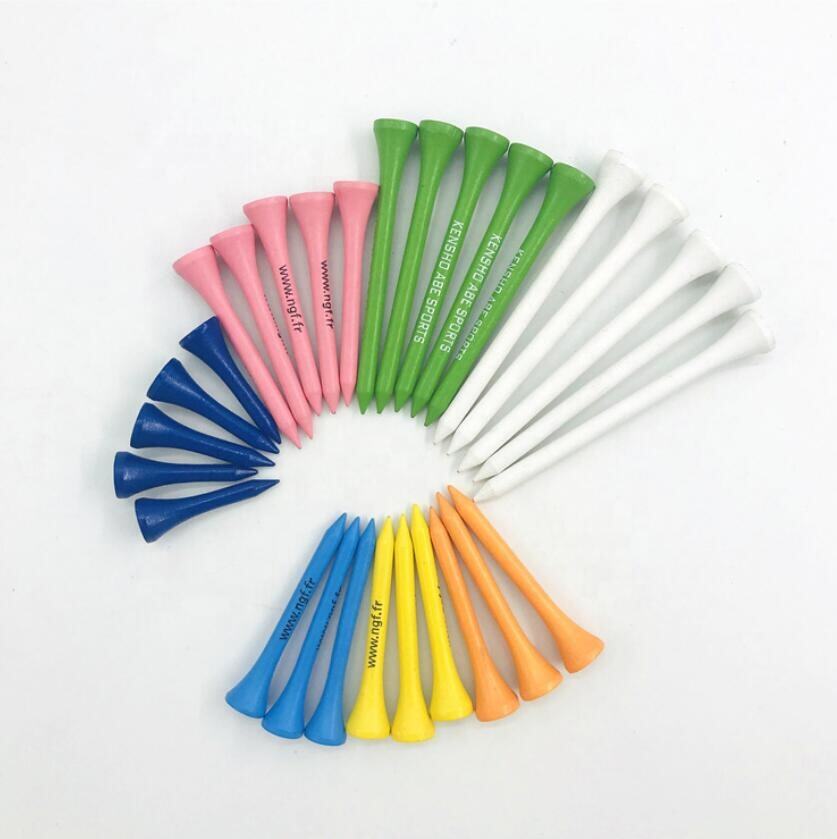Understanding the Science Behind Golf Tee Materials
The humble golf tee, often overlooked yet crucial to every golfer's game, has evolved significantly from its early wooden predecessors. Modern golf tees come in various materials, each offering distinct characteristics that can influence your shot's performance. From traditional wooden golf tees to cutting-edge composites, the material choice can impact everything from ball flight to environmental sustainability.
Today's market offers golf tees crafted from wood, plastic, bamboo, rubber compounds, and even biodegradable materials. Each type presents unique properties that affect durability, friction, height consistency, and ultimately, your drive off the tee. Understanding these differences can help you make an informed choice and potentially improve your game.
Traditional Wooden Golf Tees and Their Characteristics
Natural Properties of Wooden Tees
Wooden golf tees remain the most traditional and widely used option on courses worldwide. They offer excellent friction between the ball and tee surface, providing optimal grip during setup. The natural fibers in wood create a slight texture that helps stabilize the ball, particularly in windy conditions. Additionally, wooden golf tees compress slightly upon impact, potentially reducing resistance and enhancing drive distance.
The biodegradable nature of wooden tees makes them an environmentally conscious choice, as they naturally decompose when left on courses. However, their tendency to break after few uses means golfers need to carry multiple tees during a round.
Performance Impact of Wooden Golf Tees
When it comes to performance, wooden golf tees provide consistent results that have stood the test of time. Their slightly rough surface creates an ideal amount of friction, allowing for clean ball separation during impact. This characteristic helps reduce unwanted spin and promotes straighter drives. The natural flexibility of wood also absorbs some impact shock, potentially benefiting both equipment longevity and shot quality.
Modern Plastic and Synthetic Materials
Durability and Consistency Benefits
Plastic golf tees have gained popularity due to their exceptional durability and consistency. Unlike wooden tees, plastic varieties can last for numerous rounds, maintaining their shape and length throughout extended use. This consistency in tee height can lead to more reliable ball positioning and, consequently, more consistent drives.
Modern synthetic materials also allow for innovative designs, including brush-style tees and those with special ball-holding features. These advancements can provide enhanced stability and reduced resistance during impact.
Performance Characteristics of Synthetic Tees
The smooth surface of plastic golf tees creates different interaction dynamics with the ball compared to wooden ones. While some players report slightly less friction, leading to cleaner ball separation, others notice minimal performance differences. The reduced friction can potentially result in marginally increased ball speeds, though the effect is often negligible for most recreational players.

Innovative Composite Materials
Advanced Material Technologies
Composite golf tees represent the cutting edge of tee technology, combining multiple materials to optimize performance characteristics. These tees often incorporate materials like carbon fiber, fiberglass, or specialized polymers. The result is a product that offers superior durability while maintaining optimal playing characteristics.
Some composite tees feature specialized coatings or surface treatments designed to reduce friction and enhance ball flight. These innovations aim to provide measurable improvements in drive distance and accuracy.
Performance Advantages of Composite Tees
The engineered nature of composite golf tees allows manufacturers to fine-tune specific performance aspects. Some designs focus on reducing resistance during impact, while others emphasize stability or height consistency. The combination of materials can create tees that offer the best characteristics of both traditional and modern materials.
Eco-Friendly and Biodegradable Options
Sustainable Materials in Golf
As environmental consciousness grows in the golfing community, manufacturers have developed eco-friendly golf tees using materials like bamboo, cornstarch-based compounds, and other biodegradable substances. These alternatives offer similar performance characteristics to traditional tees while reducing environmental impact.
Bamboo golf tees, in particular, have gained popularity due to their renewable nature and durability that exceeds traditional wooden tees. They provide excellent stability and consistent performance while maintaining environmental responsibility.
Performance of Sustainable Tees
Modern biodegradable golf tees often match or exceed the performance of traditional materials. Bamboo tees, for instance, offer superior strength-to-weight ratios and natural friction properties that benefit ball stability. These eco-friendly options demonstrate that environmental consciousness doesn't require sacrificing performance.
Frequently Asked Questions
How does tee material affect driving distance?
Tee material primarily influences ball interaction during setup and impact. While differences are typically minimal, some materials like composites and certain plastics may reduce friction slightly, potentially contributing to marginally increased ball speeds. However, proper swing mechanics and club selection remain far more significant factors in determining driving distance.
Which tee material lasts the longest?
Composite and plastic golf tees generally offer the greatest durability, often lasting dozens of rounds before showing significant wear. Bamboo tees provide an eco-friendly alternative with above-average durability, while traditional wooden tees typically last only a few shots before requiring replacement.
Are premium material tees worth the investment?
For players seeking consistency in their tee game, premium materials like composites or high-grade synthetics can provide value through extended durability and consistent performance. However, many golfers find traditional wooden or basic plastic tees perfectly suitable for their needs, making the choice largely dependent on personal preference and playing style.




